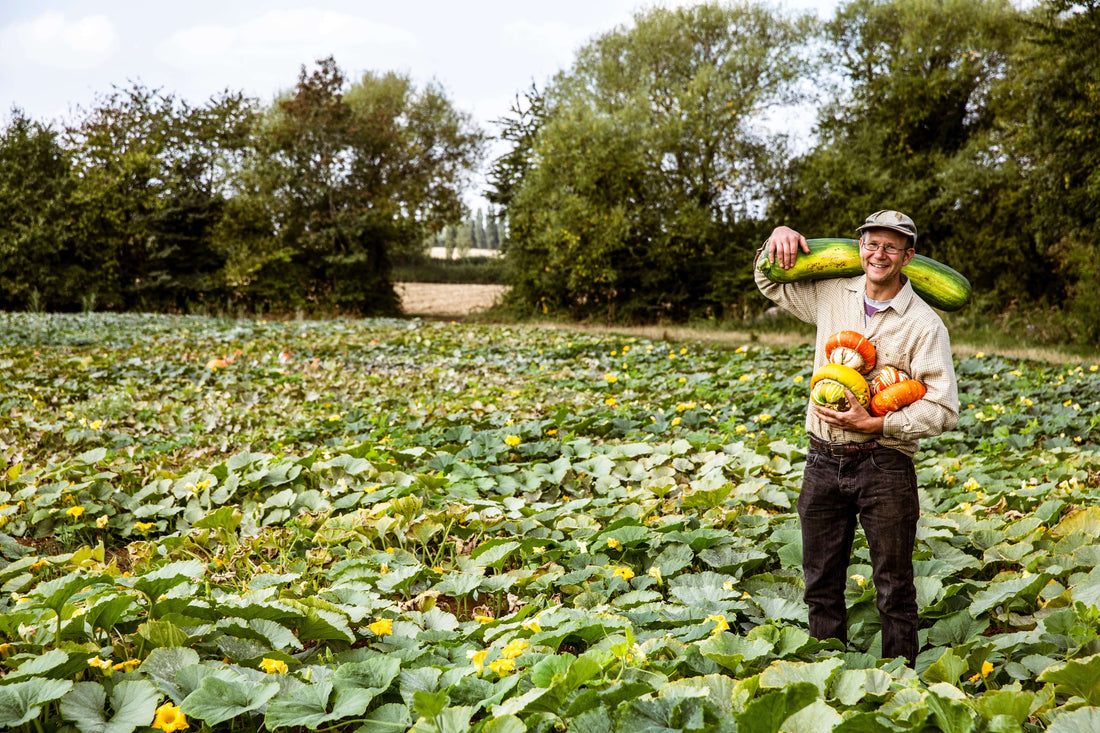
Organic Planting Guide: Eggplant and Squash Cultivation in the United States
Share
Topics Covered in This Guide:
-
Introduction to Organic Cultivation of Eggplant and Squash
-
Site Selection and Soil Preparation
-
Organic Soil Amendment: Fertilizers, Worm Castings, and Dairy Compost
-
Seed Starting and Transplanting Techniques
-
Irrigation and Mulching Best Practices
-
Pest and Disease Management (Organic Methods)
-
Harvesting and Post-Harvest Handling
-
Recommended Organic Soil Inputs
1. Introduction to Organic Cultivation of Eggplant and Squash
Eggplant (Solanum melongena) and squash (Cucurbita spp.) are warm-season vegetables widely grown across the United States. Cultivating these crops organically enhances soil health, preserves beneficial insect populations, and provides nutritious, chemical-free produce. This guide outlines the key steps and inputs required to grow these crops successfully using strictly organic practices.
2. Site Selection and Soil Preparation
Choose a site that receives full sun (at least 6–8 hours of direct sunlight daily) with well-drained, loamy soil. Avoid low-lying areas prone to waterlogging. Conduct a soil pH test—ideal pH ranges from 6.0 to 6.8 for both eggplant and squash.
Steps for Site Preparation:
-
Clear existing weeds and debris.
-
Till the top 6–8 inches of soil to break up compacted layers.
-
Incorporate organic matter (compost and worm castings) evenly into the soil during bed preparation.
3. Organic Soil Amendment: Fertilizers, Worm Castings, and Dairy Compost
A healthy, biologically active soil foundation is crucial for organic cultivation.
Dairy Compost Application:
Use Dan’s Gold Organic Dairy Compost to enhance soil fertility and microbial life. This compost provides a slow-release nutrient source, ideal for long-season crops like eggplant and squash.
Application Rate:
Incorporate 1–2 inches of compost into the top 6 inches of soil before planting.
Worm Castings (Vermicompost):
Apply Mikey’s Worm Poop Organic Dairy Vermicompost to support early root development and seedling vigor. Worm castings are rich in beneficial microbes and plant-available nutrients.
Application Rate:
Mix 1 cup per transplant hole or broadcast at 10 lbs per 100 sq ft before planting.
Organic Fertilizer Strategy:
Utilize only certified organic fertilizer blends with a balanced N-P-K ratio (e.g., 5-5-5 or 4-6-3), suitable for fruiting vegetables. Apply in accordance with manufacturer instructions and crop growth stage.
Note: Visit Soil, Seed & Water to explore a curated range of premium organic soil amendments tailored for sustainable growers.
4. Seed Starting and Transplanting Techniques
Eggplants require 6–8 weeks of indoor seed starting before transplanting, while squash can be directly seeded or started 2–3 weeks early.
Eggplant:
-
Start seeds indoors 8 weeks before the last frost.
-
Transplant when night temperatures consistently exceed 55°F.
Squash:
-
Direct seed after danger of frost has passed.
-
If transplanting, handle seedlings gently to avoid root disturbance.
Transplant Spacing:
-
Eggplant: 18–24 inches apart in rows 30–36 inches wide.
-
Squash: 24–36 inches apart in rows 36–48 inches wide.
5. Irrigation and Mulching Best Practices
Maintain consistent soil moisture, particularly during flowering and fruit development. Use drip irrigation to minimize disease risk and conserve water.
Mulching: Apply a 2–3 inch layer of organic mulch (e.g., straw, shredded leaves) to:
-
Suppress weeds
-
Retain moisture
-
Regulate soil temperature
6. Pest and Disease Management (Organic Methods)
Common Pests:
-
Flea beetles (eggplant): Use row covers early in the season.
-
Squash bugs and vine borers (squash): Use trap crops and remove egg clusters manually.
Organic Controls:
-
Neem oil or insecticidal soap for soft-bodied insects
-
BT (Bacillus thuringiensis) for caterpillar pests
-
Copper or sulfur-based fungicides for mildew (if needed)
Promote beneficial insects and rotate crops annually to disrupt pest cycles.
7. Harvesting and Post-Harvest Handling
Eggplant: Harvest when the skin is glossy and firm. Overripe fruits become bitter.
Squash:
-
Summer squash: Pick when young and tender (6–8 inches long).
-
Winter squash: Harvest when rind is hard and stems are dry; cure in a warm, dry area for 10–14 days before storage.
Use clean, sharp tools for harvesting to avoid plant damage and spread of disease.
8. Recommended Organic Soil Inputs
For optimal crop performance, integrate these organic soil amendments into your program:
-
Dan’s Gold Organic Dairy Compost: Enhances soil structure and fertility.
-
Mikey’s Worm Poop Organic Vermicompost: Boosts biological activity and plant health.
-
Organic Fertilizer: Ensure it is OMRI-listed or certified for organic use.
All of these premium organic inputs are available at Soil, Seed & Water, a trusted resource for regenerative agriculture products.
By following this guide and using high-quality organic inputs, home gardeners and small-scale growers can successfully cultivate eggplant and squash while supporting long-term soil health and environmental sustainability.
